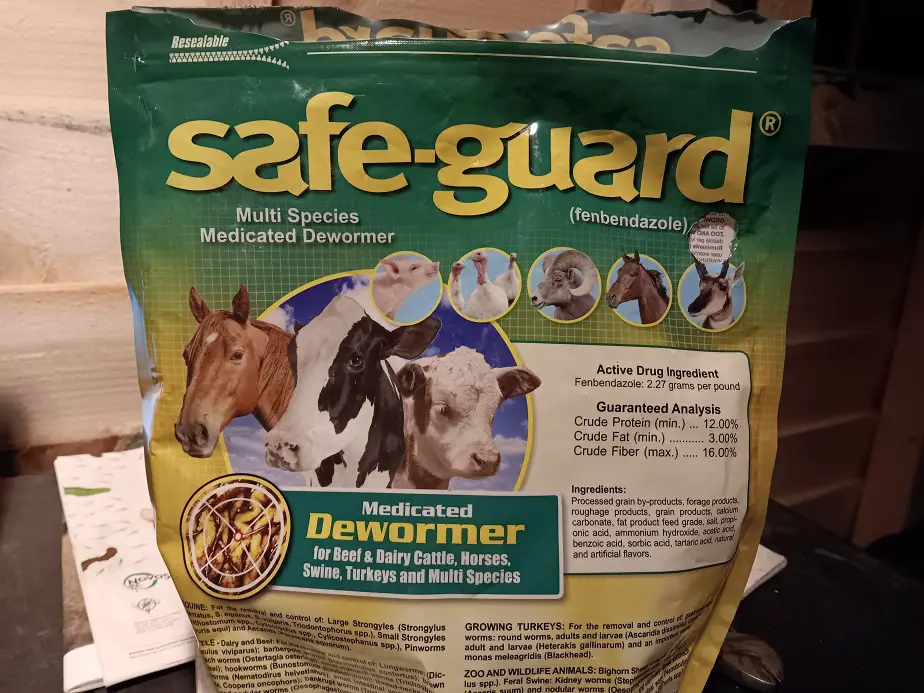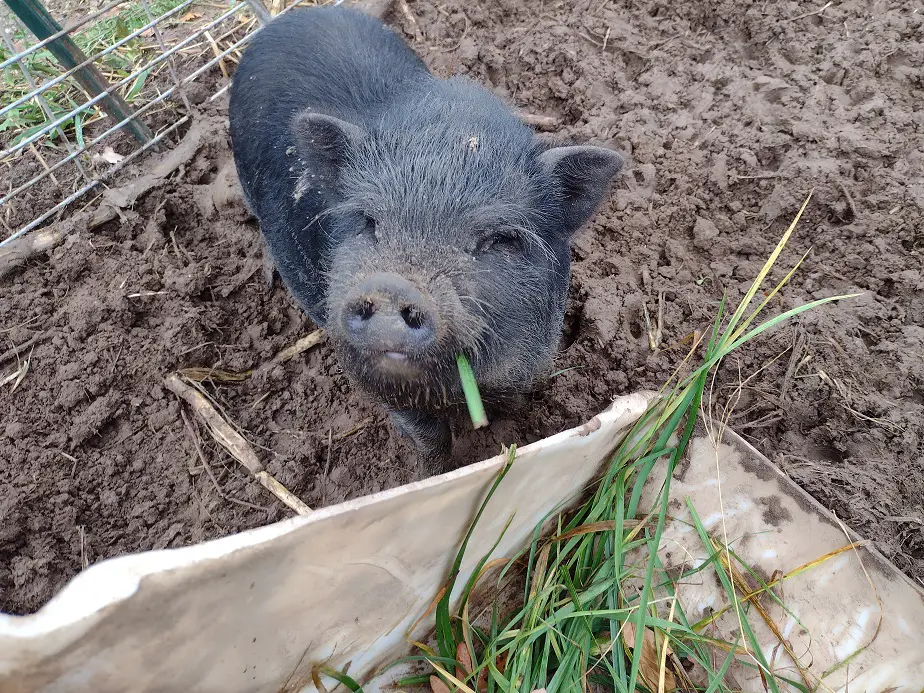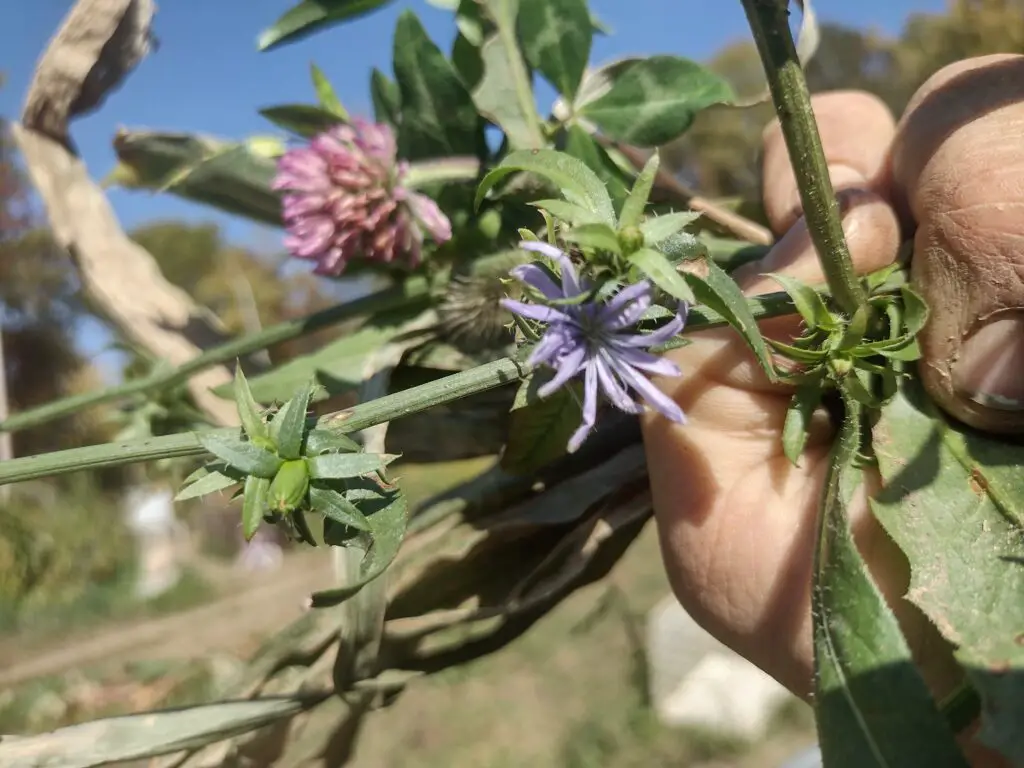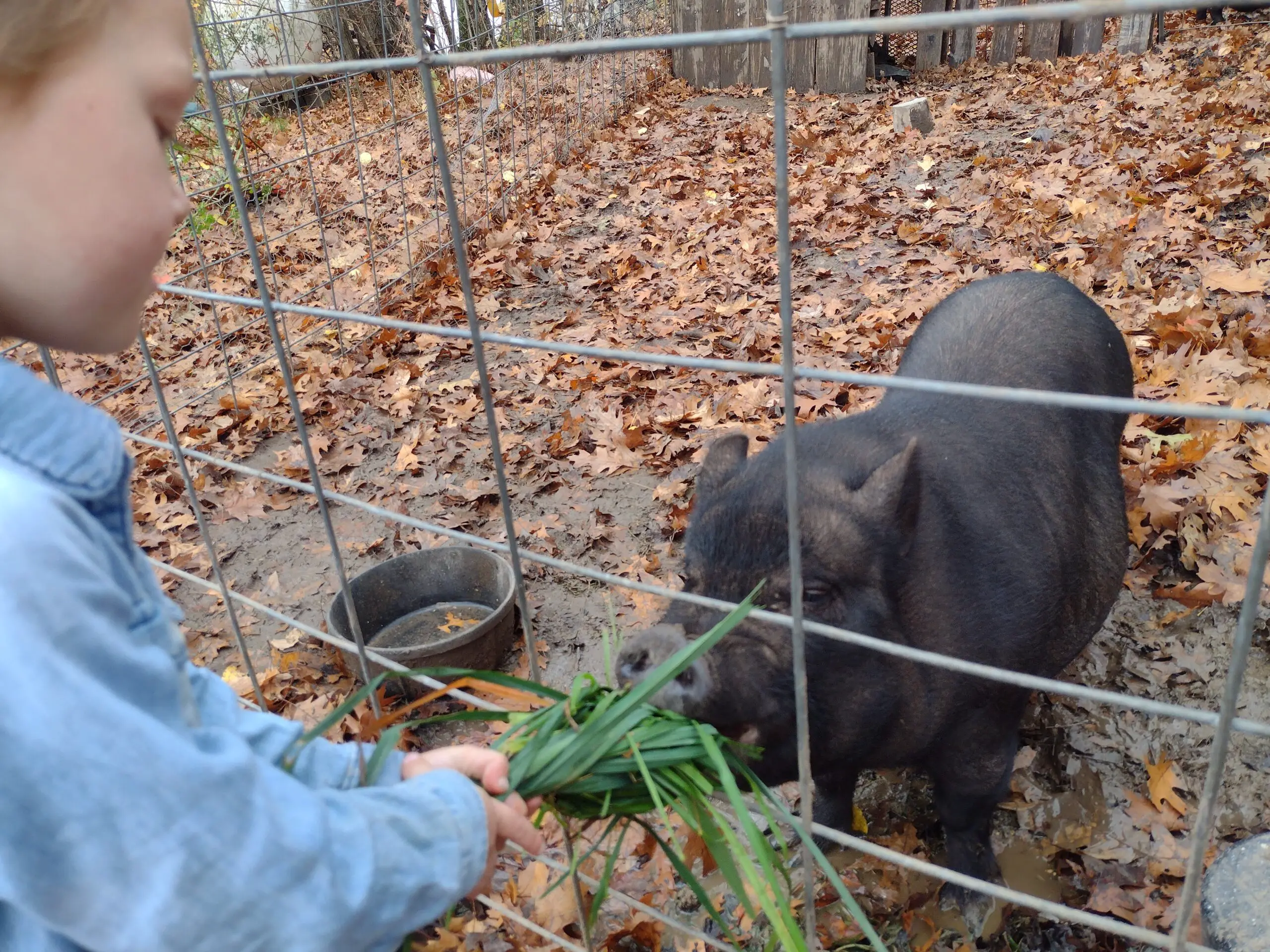We’ve raised about 20 pigs in the last 3 years. I’ve definitely learned a few things about them.
Pigs do not need hay and most pigs are raised without it. Quality alfalfa hay is sometimes included in pig feed as a natural vitamin and calcium supplement but it is not needed. Hay, especially fresh, can improve the digestion and gut health of pigs and reduce the number of harmful bacteria in their manure.
Hay can benefit pigs but it can also harm them. Here’s what you need to know to use it right.
Should Pigs Get Hay?
Giving pigs hay is often viewed as a waste, and it certainly can be. Oftentimes, most of the hay is trampled in the mud and pigs won’t touch it. But, a few pig farmers I know recommend giving pigs some quality hay from time to time. I agree. Good hay does benefit pigs’ growth, health, and happiness.
If you can keep the hay out of the mud, pigs will enjoy it as a snack. Once it’s stepped on or dirtied, they may just leave it alone. Put hay in a feed trough to keep it clean.
Very few pigs have the genetics to make do with just green plants, but all pigs benefit from a little hay to chew on. I know some farmers who would never give pigs hay because they see it as an unnecessary expense. That can also be true. My question would be, could your pigs use a vitamin boost?
We use hay as a way to keep our pig’s diet well-rounded. Our pigs get a primary feed of fermented whole grains and a little sunflower seed or soy. We don’t include any vitamin or mineral pre-mix powders, which is against standard operating procedures. But, most of what we do is not standard in this day and age.
Hay is a way for pigs to get quality fiber, chlorophyll, and vitamins. It also seems to make pigs happy. A study by the University of Ljubljana in Slovenia showed that pigs in confinement when given hay had a significant reduction in destructive behaviors like breaking gates and biting each other.
In the 1950s, pig farming moved away from pastures and went into small pens and confinement barns where each pig only gets 8-square feet of space. This was done to streamline the process and cause the pigs to use less feed. Unfortunately, it also eliminated pigs from eating fresh pasture hay.
Prior to the 1950s, pigs got most of their vitamins and fiber from green plants in the pasture. Today, synthetic vitamins are added to pig feed. Naturally occurring vitamins, like those in fresh and dried hay, are much more absorbable to pigs. Hay, fresh or dried, helps pigs.

One thing you need for pigs, no matter your raising system, is a parasitic worm treatment. The best swine dewormer is Fenbendazole. It’s known by the brand name Safeguard. Safeguard is available as a medicated corn/alfalfa pellet. It’s the only way I can worm my pigs since they won’t stand still for an injection of Ivermectin. It’s easy and cheap.
- There is a stronger pellet for swine only. Here it is on Amazon
- There is a weaker pellet for general barnyard livestock, including swine. Here it is on Amazon.
I use the multi-species version because it’s what’s available in my local store and I can use it for my chickens too. It’s the most effective swine wormer and the easiest to administer. I use it on all weaned piglets and adults twice a year. Don’t go without it.

Can Pigs Digest Hay or Grass?
Pigs can digest hay. Over a 2-month period, a healthy, mature pig can be conditioned to digest the starches and fibers in hay fairly well. Young pigs tend to lack the digestive capability and gut flora to digest hay as well, but they still like it and get nutrition from it. Some breeds can digest hay better.
Farmers used to believe that pigs can digest hay just fine. Research from the 50s and 60s started to claim otherwise. Now, it’s going full-circle and better research supports that a pig’s digestion can handle large quantities of hay of fresh plant forage and extract nutrition from it.
A pig’s large intestine is capable of digesting most of the fiber in hay as long as the pig has been conditioned to eat hay. Conditioning means introducing and increasing hay consumption over a two-month period. Hay and fodder are capable of replacing up to 50% of a pig’s diet. I’ll link to the research at the end of this article.
What Nutrients do Pigs Get From Hay?
Hay provides pigs with vitamins A, B, C, D, and K, as well as low amounts of alpha-linolenic acid and linoleic acid ( two important fatty acids). Hay also contains more protein than most grains, although not in a complete balance for pigs.
Hay that still has the sweet, fresh-cut grass smell contains decent levels of chlorophyll. Chlorophyll improves general body function including metabolism, wound healing, and the immune system. This is one big reason why we cut a little fresh greens daily for our pigs. Fresher is better.
Old hay has less nutrition than fresh hay. You can usually go by color and smell. Fresher hay is more green and smells sweeter. Late-cutting hay (3rd or 4th cutting) will have better nutrition during the winter than early-cutting hay. Oxegen breaks down the vitamins and fatty acids in hay. Fresh is better.
How Much Hay is Good For Pigs?
Meat pigs can be given up to a flake (small arm-load) of hay a day without concern of poor gains. Pigs can be given hay in limited quantities or free choice. When feeding pigs hay in an outdoor setting, most mineral and vitamin feed additives can be excluded but lysine levels may need to increase. Hay is devoid of lysine.
To supplement lysine and other lacking amino acids in hay, a complete protein source like peas, soybean, or sunflower seed should be used. Fermented grains can also be used to add lysine to a pig’s diet. It’s important to observe a pig’s condition regularly to see if they are looking well-fed and nourished.
A diet high in may prove problematic with pregnant or nursing pigs, especially in the winter. Not all hay is created equal. Some are nutritionally dense and high in protein, but some are simply not so much.

Best Type of Hay for Pigs?
Alfalfa is considered the best dry hay crop for pigs due to its high levels of vitamins, calcium, and protein. Clover is another good option but hard to find. Fresh, undried hay crops of any kind rank very high in nutrition for pigs.
light-colored grassy or weedy hay is the lowest quality for pigs. It can still be beneficial, but it’s going to be a very low-protein and low-energy feed. Fresh-cut grasses are great for pigs and has decent levels of beneficial vitamins.
But, once dried, most of the vitamins are oxidated and no longer exist in functional quantities. Starting with a forage crop of higher vitamin and feed value, like alfalfa, clover, chickory, or comfrey will allow you to have appreciable amounts of those nutrients left after drying and storing.
Still, older hay is worth less nutritionally. As much as possible, we cut fresh every day and feed a good portion of greens to the pigs. I have seen an improvement since we started doing that. Their activity is up, they seem more content and have fewer skin issues.
Published Research About Hay for Pigs
Can Pigs Live on Just Hay?
Some mature pigs can live on just hay, but it will very likely lead to malnourishment and underfed pigs. To make it work, you need high-quality, nutrient-dense hay and pigs that were selectively bred for it. Even then, they grow very slowly compared to pigs fed a concentrated (grains and proteins) feed.
Running a true grass-fed pork farm is a tough endeavor. It’s hard to get pigs to fill out well and to have enough fat on them for the pork to be tender. It just doesn’t produce to the same scale. The pork market has been overrun with fast-grown, pigs with large buts for ham. The consumer has gotten used to that.
The hard part about raising pigs on more of a pasture diet is that it’s hard to sell them for meat. The market for that kind of pig is quite small, although growing a bit in recent years.
Pigs that are raised in a clean environment, out in the sunshine and fresh air, getting exercise, and eating some hay or fodder, those pigs are healthier, more pleasant to be around, and provide a darker, more delicious pork for your table.
Related Articles


Great article. I raise Kunekune on pasture takes longer but it’s so worth it.
How long do you give them? Could you describe your raising and feeding operation? I’d love to hear more.